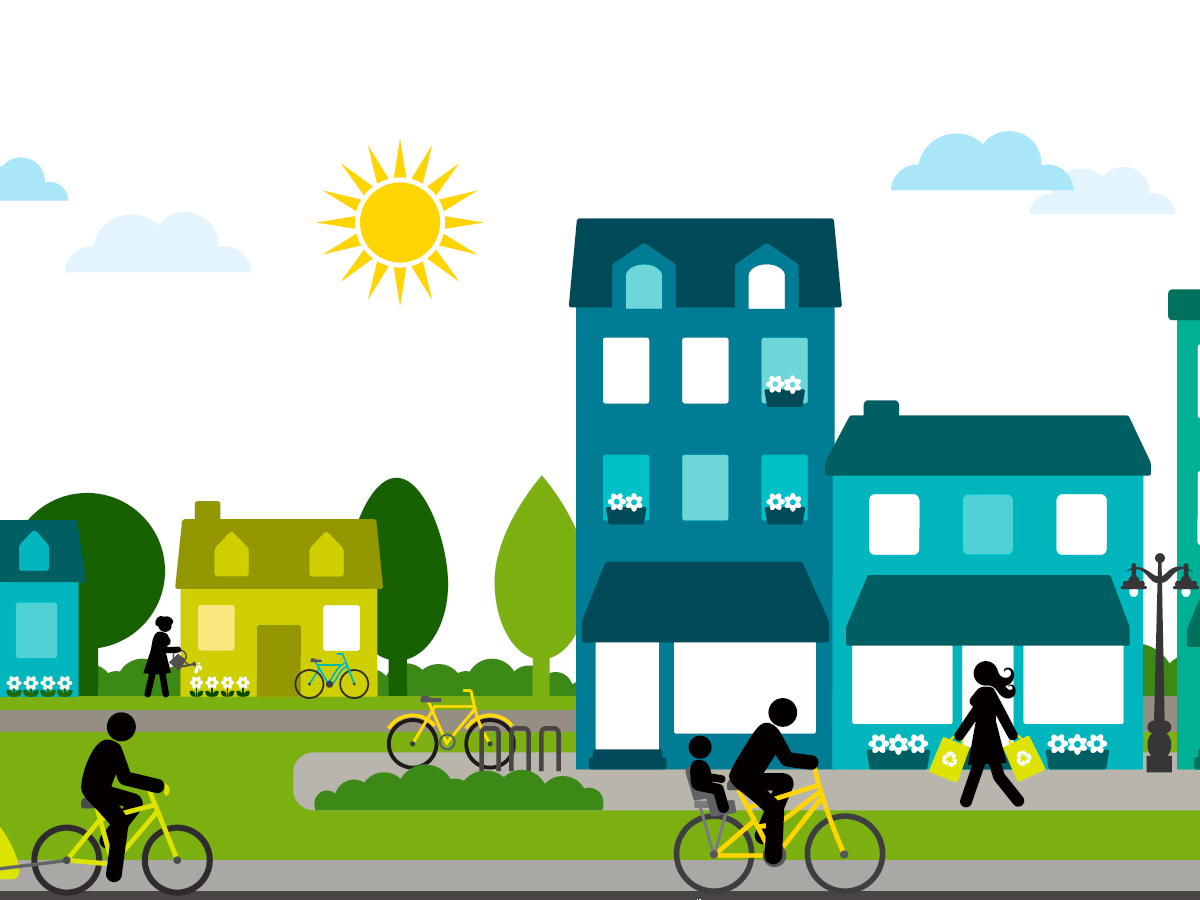Ryerson researcher examines the benefits of expanding cycling infrastructure

Cycling is a way to increase sustainable travel while also contributing to physical health and community well-being. Researcher Raktim Mitra looks at the factors that increase cycling. (Illustration by Si-Gal)
Growing the number of cyclists in urban centres is one of the goals of School of Urban and Regional Planning professor Raktim Mitra’s research. His work aims to pinpoint the areas where that growth is most feasible and most easily adopted.
Director of the TransForm Lab and a cyclist himself, professor Mitra wants to examine not only how many people cycle as part of their commute to work or school, but also under what conditions they choose to cycle and what conditions could grow the cycling population. He is currently working on a four-year project funded by the Social Sciences and Humanities Research Council of Canada (SSHRC) to take a closer look at the infrastructure that supports cyclists.
The first component of the project examined an urban population’s desire to cycle during winter months. Ryerson University served as a sample community to determine if bike infrastructure, such as cycle tracks or bike lanes, compensates for adverse weather conditions. The report from that phase of research was presented at the Transportation Research Board’s 97th Annual Meeting in January 2018 and showed that cyclists would be more likely to adopt cycling year-round should the infrastructure be in place to ensure their safety.
“Winter cycling is difficult to study, because there isn’t a lot of data,” said professor Mitra. However, through the study, the researchers were able to ascertain that 27 per cent of cyclists continue to cycle in the winter and that access to bike infrastructure increased the probability of cycling through the colder months. Another element that points towards infrastructure being key in increasing year-round cycling is the fact that most pedestrians continue to walk in spite of the cold weather, indicating that safety more than temperature affects a cyclist’s decision to not bike when the snow hits.
As the project continues, professor Mitra wants to examine where and how new infrastructure would encourage cycling uptake and, more importantly, if the construction of new cycling infrastructure would mean more people would opt to bike. While historically cycling infrastructure has been built in areas where residents demanded more safety for cyclists, professor Mitra is exploring whether the building of new infrastructure in areas where there isn’t currently a demand would also create more of a cycling culture.
“We know people bike more in areas where there is infrastructure,” said professor Mitra. “But we cannot confirm a causality. Do more people bike because there is infrastructure, or is infrastructure built in areas where people bike?”
The next step of his projects will include surveying areas in the Toronto region where new bike infrastructure has been installed in recent years to determine if there has been an increase in cycling uptake.
Professor Mitra and his students are also examining other areas that could increase commuter cycling, for instance cycling as a means of transportation to and from public transit options such as GO stations as a “first mile/last mile” solution for daily commutes.
Professor Mitra’s work is supported by the Social Sciences and Humanities Research Council of Canada.